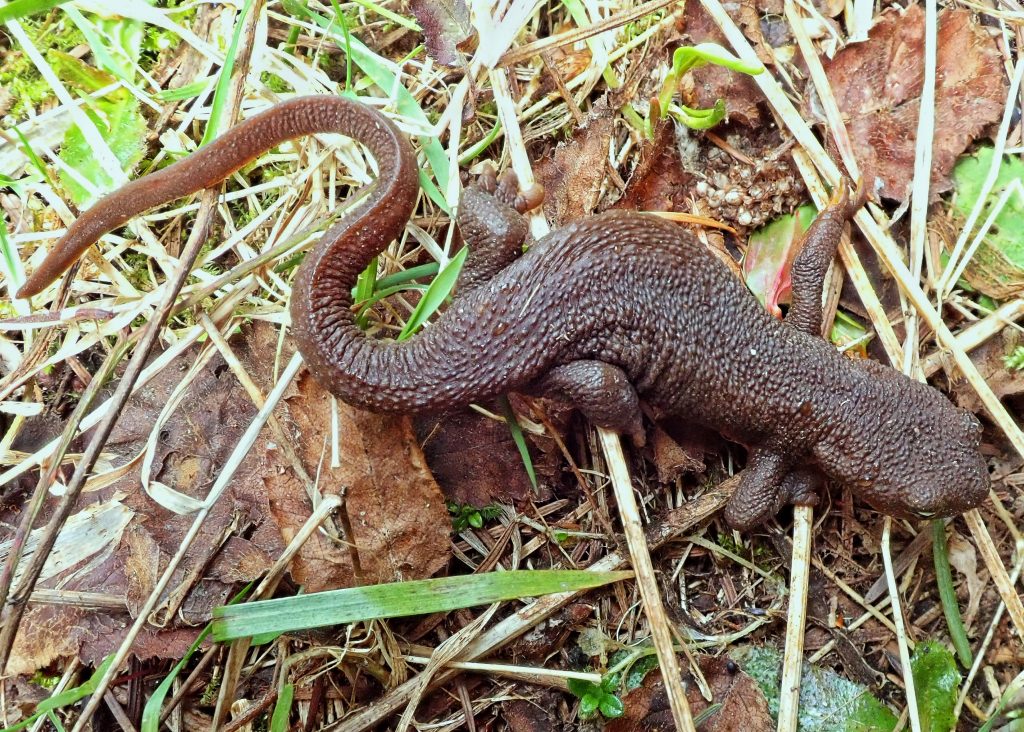
Between the fact that they are our only routinely diurnal salamander, and their frequent visibility in the shallow waters of lakes and ponds, Taricha granulosa is undoubtedly the most commonly encountered salamander in our region, and I would bet that almost everyone who even periodically gets out in natural areas west of the Cascades has seen at least one.
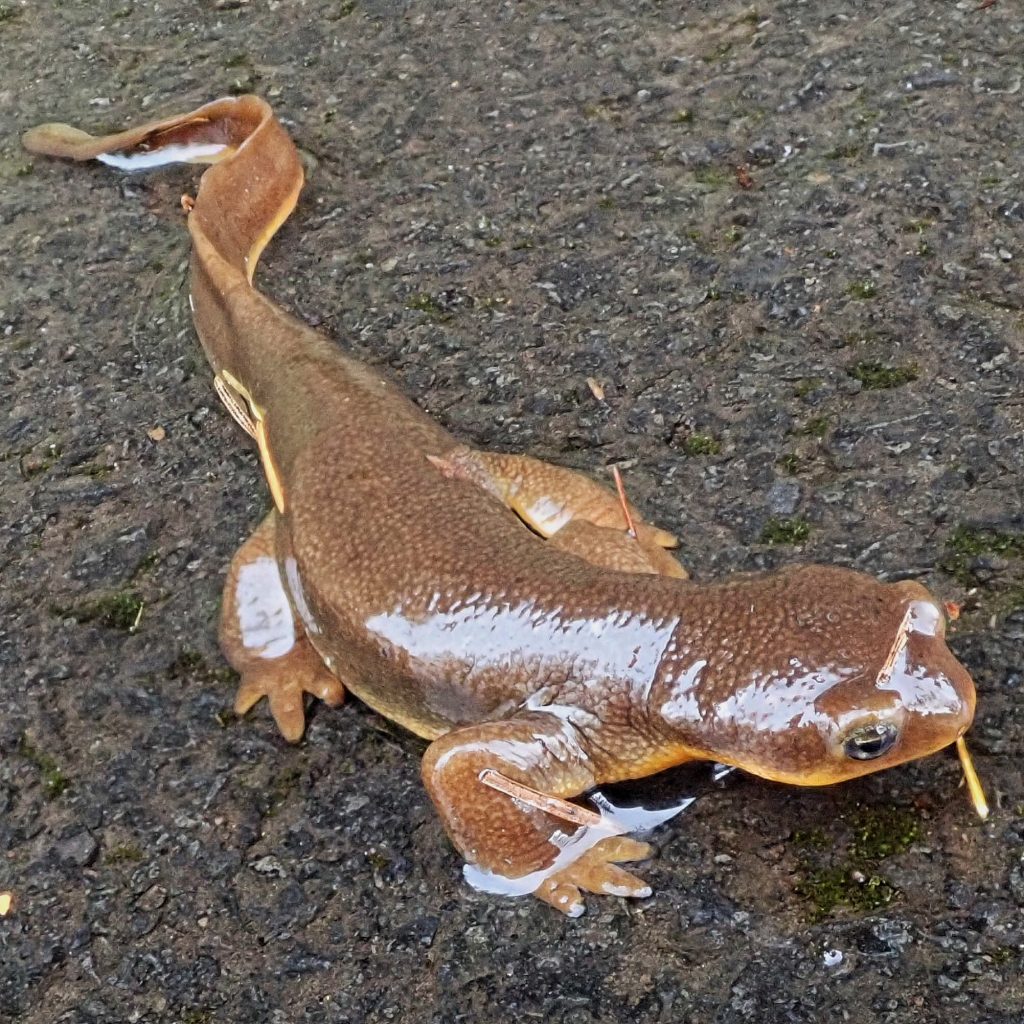
In late winter/early spring Rough-skinned Newts, like most salamanders, become motivated to get out there and perpetuate their species, often embarking on something of a migration to their natal pond, lake, or wetland. Even ditches and slow moving watercourses may host breeders. In doing so they often can be seen in good numbers crossing trails and roads.
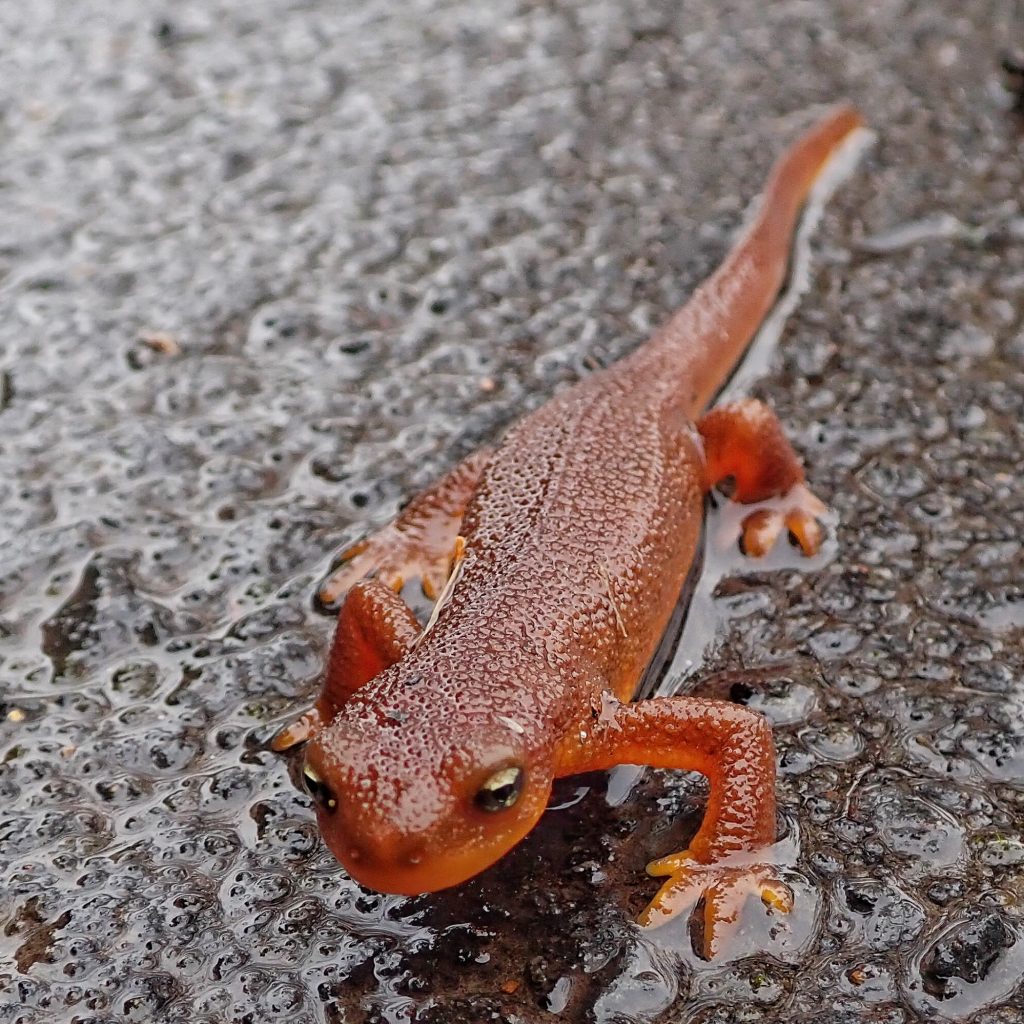
During yesterday’s hike at North Fork Reservoir (an impoundment of the Clackamas River in Clackamas County, Oregon) with my nbo Morgan, we encountered well over a dozen of these interesting amphibians as they crossed the gated, dam access road we were traveling, affording multiple photo ops. They were numerous enough that we had to be vigilant not to step on them. Fortunately Morg exercised that vigilance whilst I was rubbernecking the surrounding areas for interesting lifeforms, and they saved me from stepping on more than one.
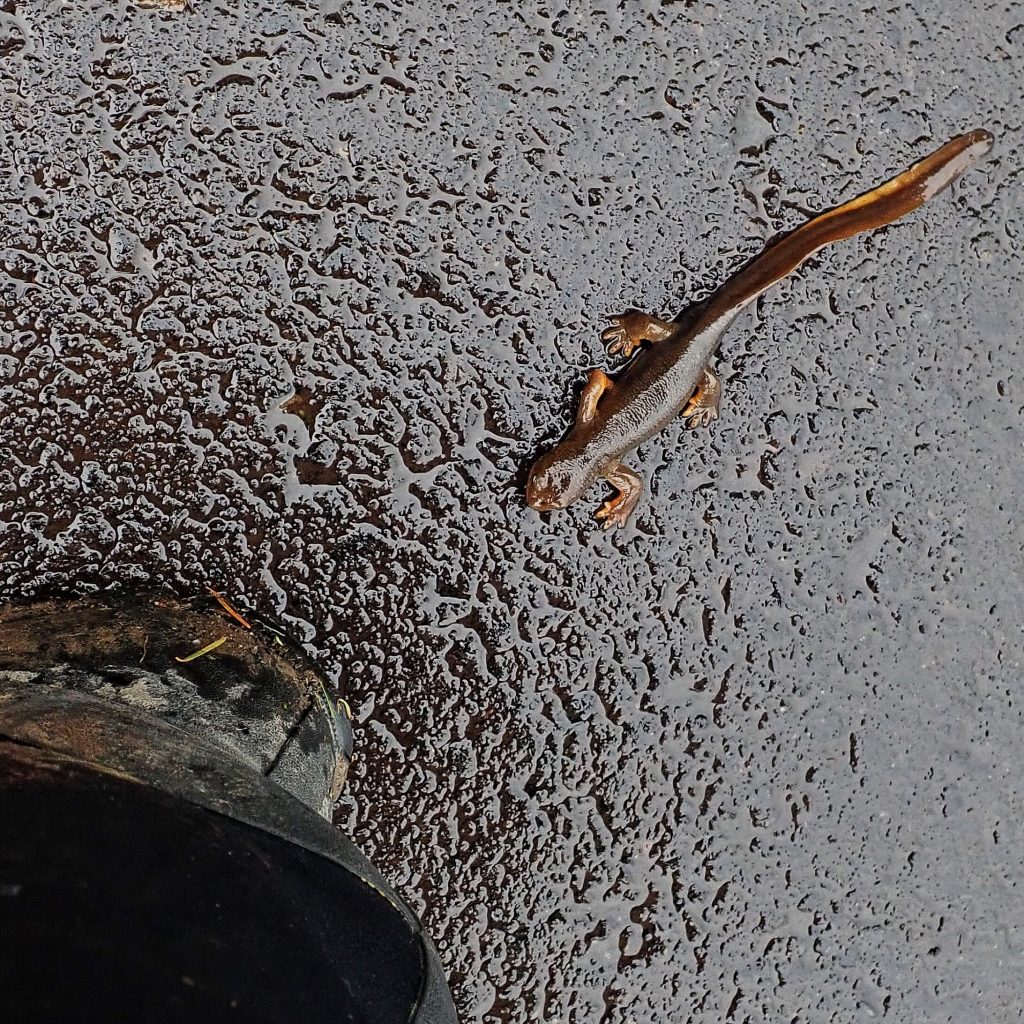
The willingness of Taricha granulosa to be active during daylight hours is probably due to the protection offered by the neurotoxin tetrodotoxin. It is interesting to note that the newt does not produce the toxin itself. Instead it is produced by bacteria in the genera Aeromonas, Pseudomonas, Shewanella, and Sphingopyxis, which live in symbiosis upon and within Roughskin Newts. Humans handling this species should thoroughly wash their hands afterwards, and avoid putting them (hands or newts) in their mouth.
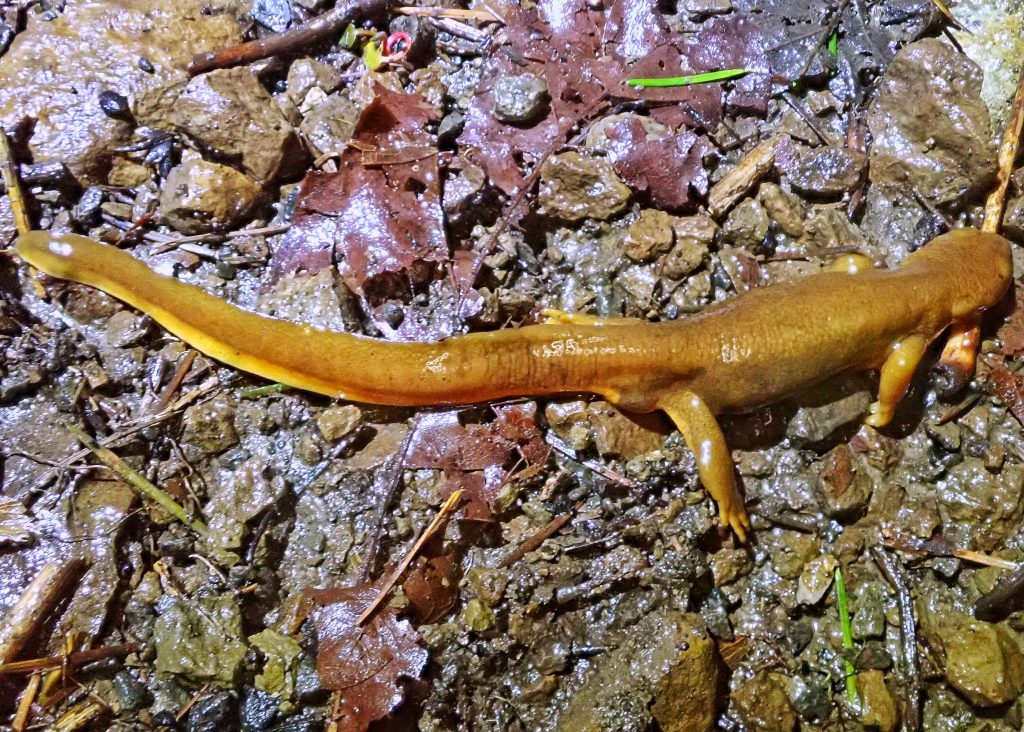
For the most part the newts don’t need the actual poison, because their orange warning color (aposematism) is enough to deter most predators. They display this by assuming a posture called the unken reflex, where they lift their tail and head to expose the bright orange ventral surface. Predators which do not heed the warning face dire consequences (although that is a little too late for the newt), since .0002 ml of back skin from a newt kills white mice in 10 minutes, which equates to enough toxin in a single Taricha granulosa to kill 25,000 mice!
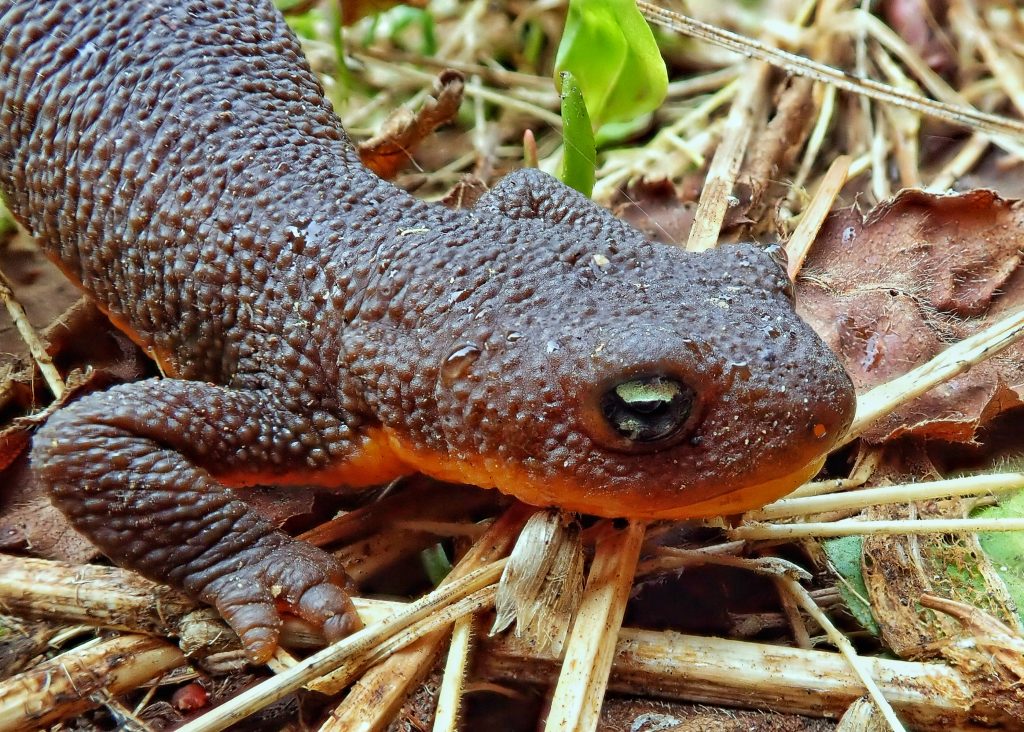
It is beyond the scope of this post to do an in depth and complete presentation on Taricha granulosa. For anyone wishing a more thorough look at this fascinating species I highly recommend clicking the links to Amphibia Web and the others listed after the etymology section.
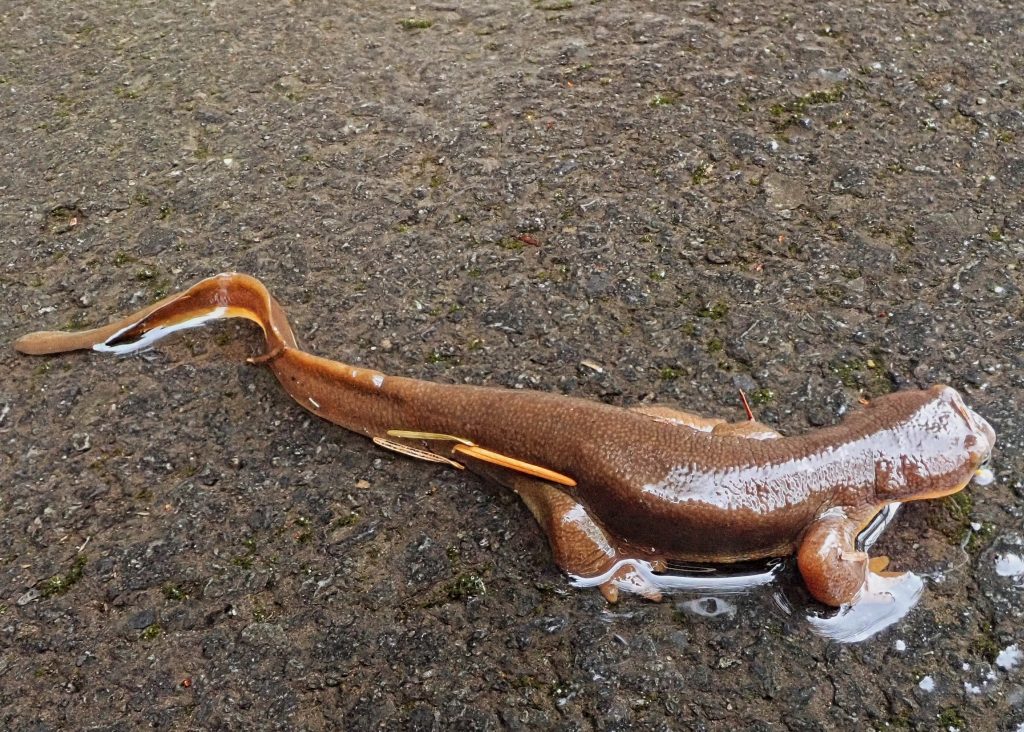
Description– Large (up to 8” total length) brown to reddish brown salamander with rough, granular skin that lacks costal grooves or any patterning; ventral surface is bright orange; adult males become smoother and somewhat ‘swollen looking’ near breeding season and when aquatic, but the pebbled nature of the skin is still clearly discernible.
Similar species– There are no other Taricha spp. in our region, and therefore nothing with the same rough, pebbled, granular skin; some Rhyacotriton and Plethodon spp. do have bright orange bellies, but lack rough skin and have bodily patterns.
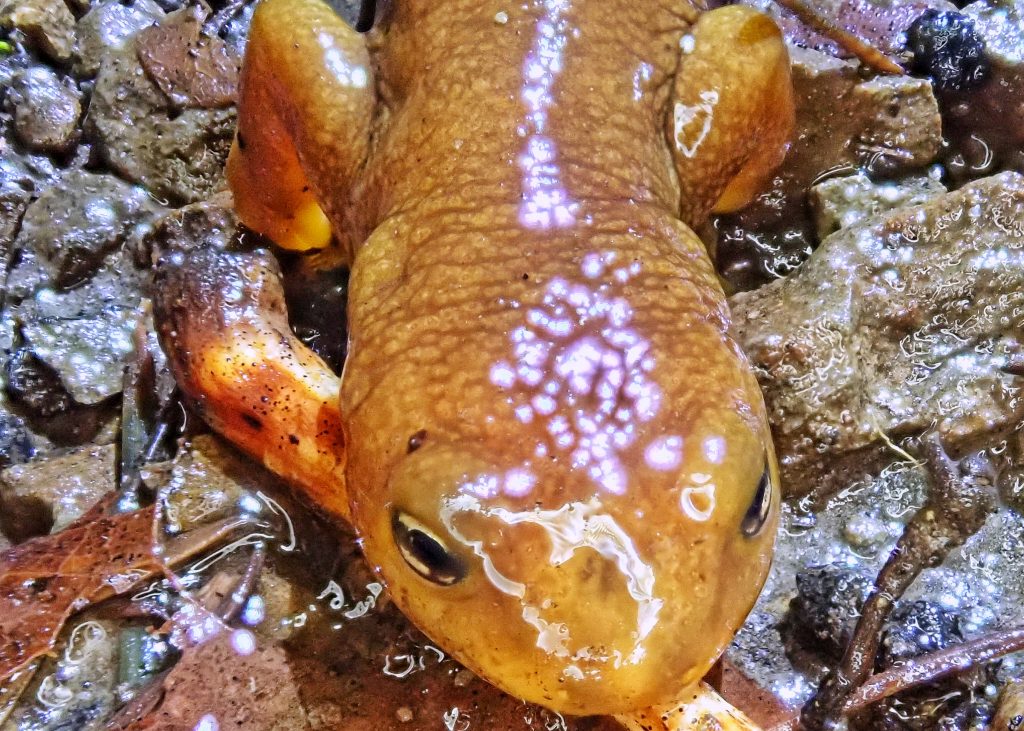
Habitat– Moist to mesic wooded areas with access to ponds, lakes, or other still waters, though this may include areas only under water in winter and spring; outside of breeding season they may be found far from their natal pond, but almost always return to it to breed.
Range– Pacific Coast endemic; found from the eastern slope of the Cascades to the Pacific Ocean, with a disjunct population in n Idaho/nw Montana that is probably the result of anthropogenic introduction.
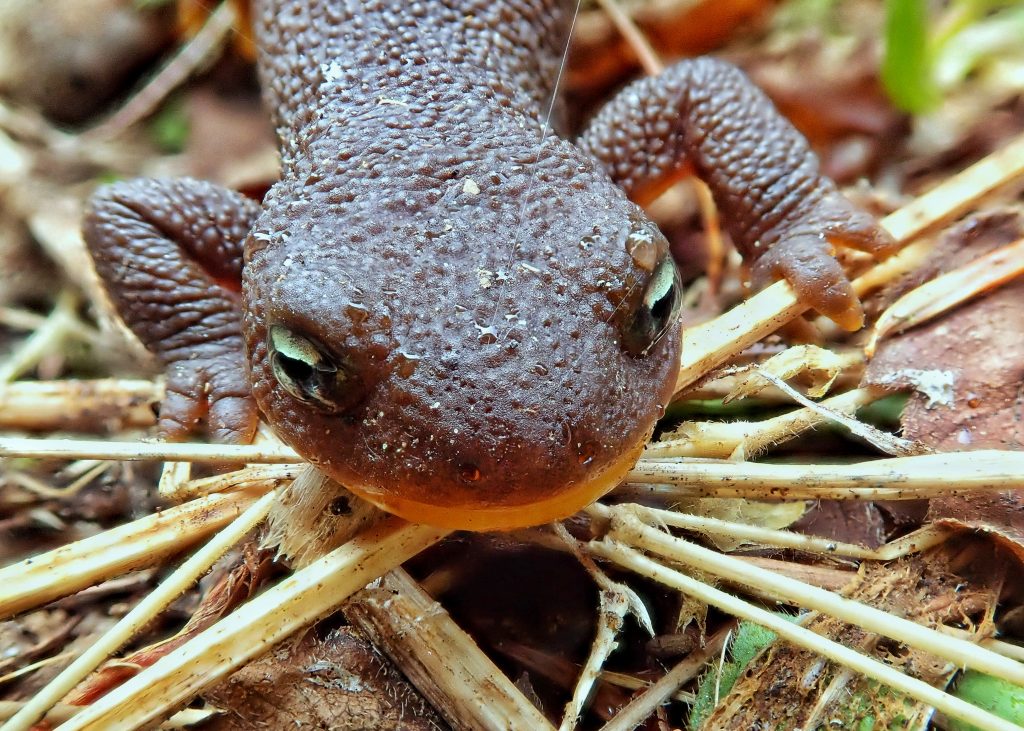
Eats– Eggs and larvae of other amphibians, aquatic invertebrates, worms, slugs, and other invertebrates.
Eaten by– Larvae are less toxic and are prey for many fish, frogs, ducks, and mammals such as raccoons, mink, and otter. After metamorphosis Taricha granulosa is very poisonous, and almost nothing eats one more than once; the exception is Thamnophis sirtalis (Common Garter Snake), which has a very high tolerance for the tetrodotoxin (the same poison that is in puffer fish) produced in the skin of the newt; in fact it appears that the very high toxicity of the newt is a response to that tolerance, a biochemical arms race.
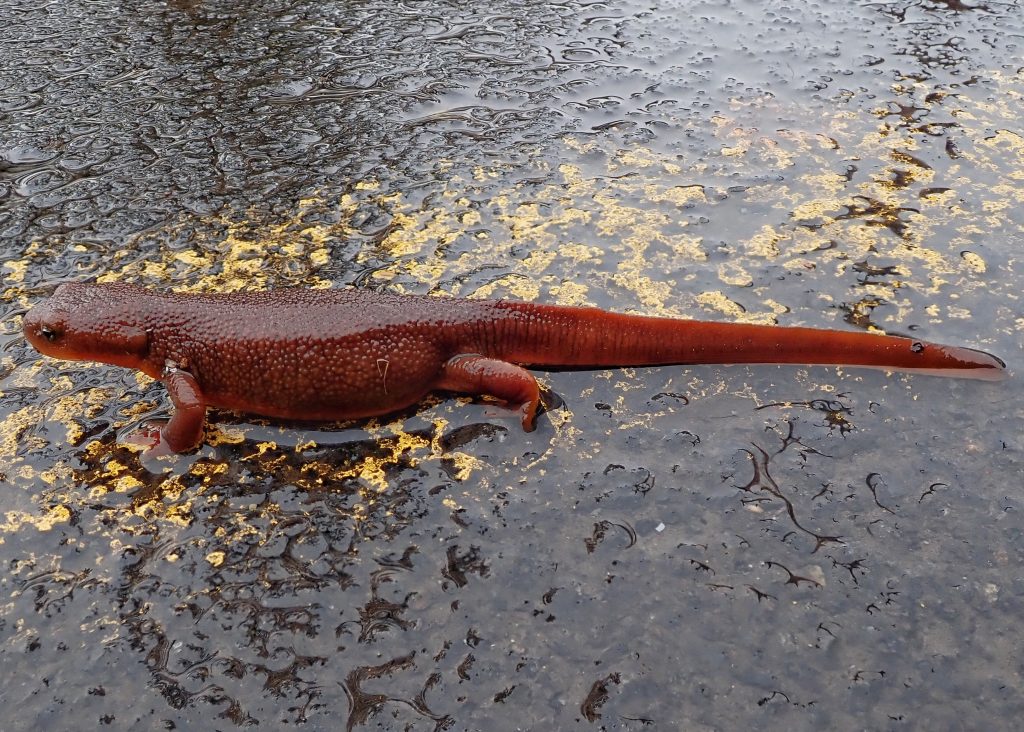
Reproduction– Mating is aquatic and takes place in early spring, the months of which vary according to elevation; mating for this species is often a group affair, and I’ve personally observed over a dozen Rough-skinned Newts in an active mating ball; eggs are laid singly, encased in jelly, usually hidden amongst and under aquatic vegetation; there is no parental care; larvae usually metamorphose after their first summer at lower elevations , and after the 2nd at higher altitudes.
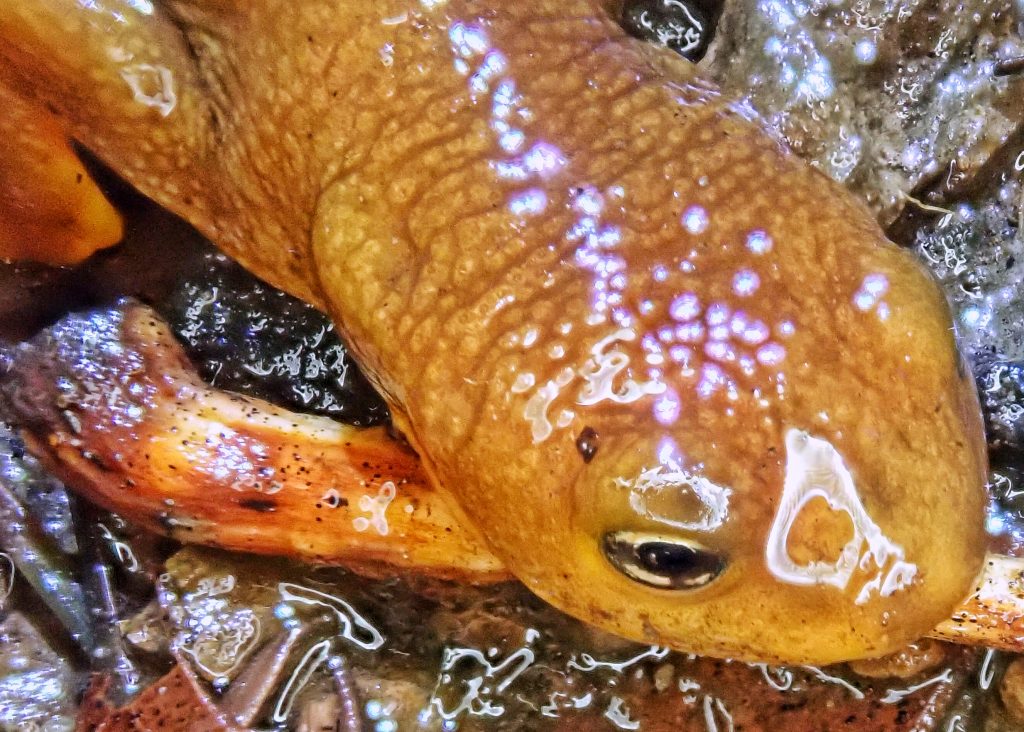
Adults active– There is usually a period of ‘quiescence’ during the warm months when they seek shelter under logs or below ground, and a period of hibernation in the coldest months when they do the same.
Etymology of names–Taricha is from the Greek and means pickled meat/embalmed body. I can’t find anything that says what this references. My personal guess is that it refers to the way the males skin swells during breeding. The specific epithet granulosa is from Latin and means ‘grainy’, referring to the rough skin of the Rough-skinned Newt.
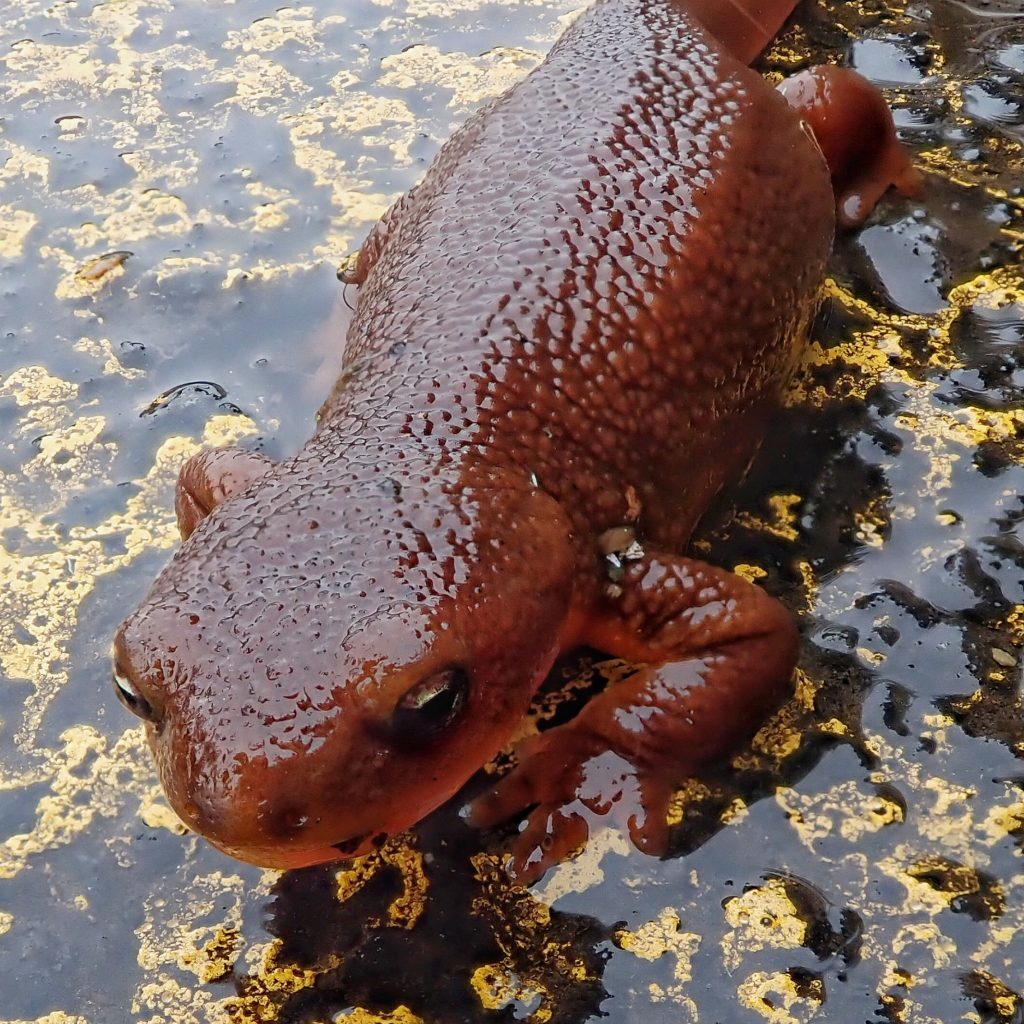
https://amphibiaweb.org/species/4288
https://animaldiversity.org/accounts/Taricha_granulosa/
http://www.californiaherps.com/salamanders/pages/t.granulosa.html
https://en.m.wikipedia.org/wiki/Rough-skinned_newt
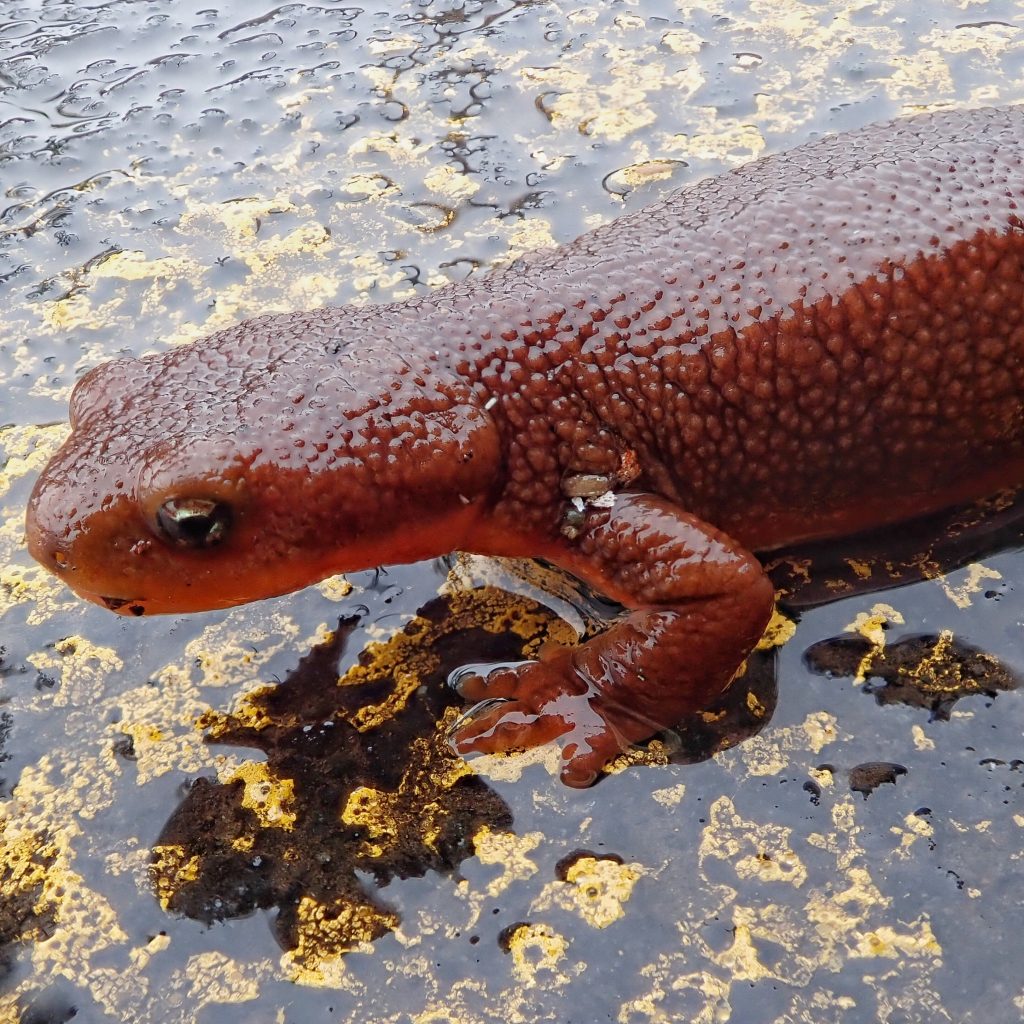
Oooo! Oooo! I’ve seen this one in spite of not looking. (Very casual & infrequent observer) There are 10,000 at Goose Lake!
We even have a very similar critter over here in the Illinois River Valley.
Jeez, Dan, now I’m curious about Salamandridae…
Thanks 4 links!
That’s cool! I looked it up. Maybe Notopthalmus viridescens (eastern newt) ?
I did 2. Bingo!
Fabulous information! I have seen these guys at every home I have had in the PNW. What do the babies look like? Would love to see them
There are some nice larval pics in the California Herps link. I’ve never positively identified one of their larvae, and I don’t have any photos of them. Thanks!
Have you ever seen a mating ball of these newts?
Yes I have. Once at a small lake in the Cascades, and once in an old beaver pond in the Coast Range. It was very cool!
Have you seen that, Alex?
So cool that you’ve seen this! I haven’t yet, but would love to locate and photograph one. So far I’ve mostly photographed these newts around Brookings, but haven’t seen any more than three or four together at a time. Any chance you’d be willing to share more info about timing and location? I’d be forever grateful for any help locating a newt mating ball!
My memory is hazy on this, and I don’t have records, but I think the one in the Coast Range, which was probably between 500’ and 1000’ elevation, was late March. And the one in the Cascades was mid May to Mid June, at about 2500’ elevation. Sorry I can be more specific than that. I’m a long way from Brookings, so even if I found some it probably wouldn’t do you any good. You’re quite a bit further south, so at low elevations I’d think you should start looking in early March. Good luck!
Thank you for those recommendations, Dan, much appreciated. I’ll let you know how it goes! I’m also planning to try out some promising high elevation lakes in the Marble Mountains around 6000′, so I’m thinking that would be June or maybe even July, hard to know I suppose, just have to go find out.
Please share what you find. Good luck!
At low elevation, especially as far south as you are, I’d guess there’d be serious mating starting in March. I’ve seen it in late May/early June at 2500’.